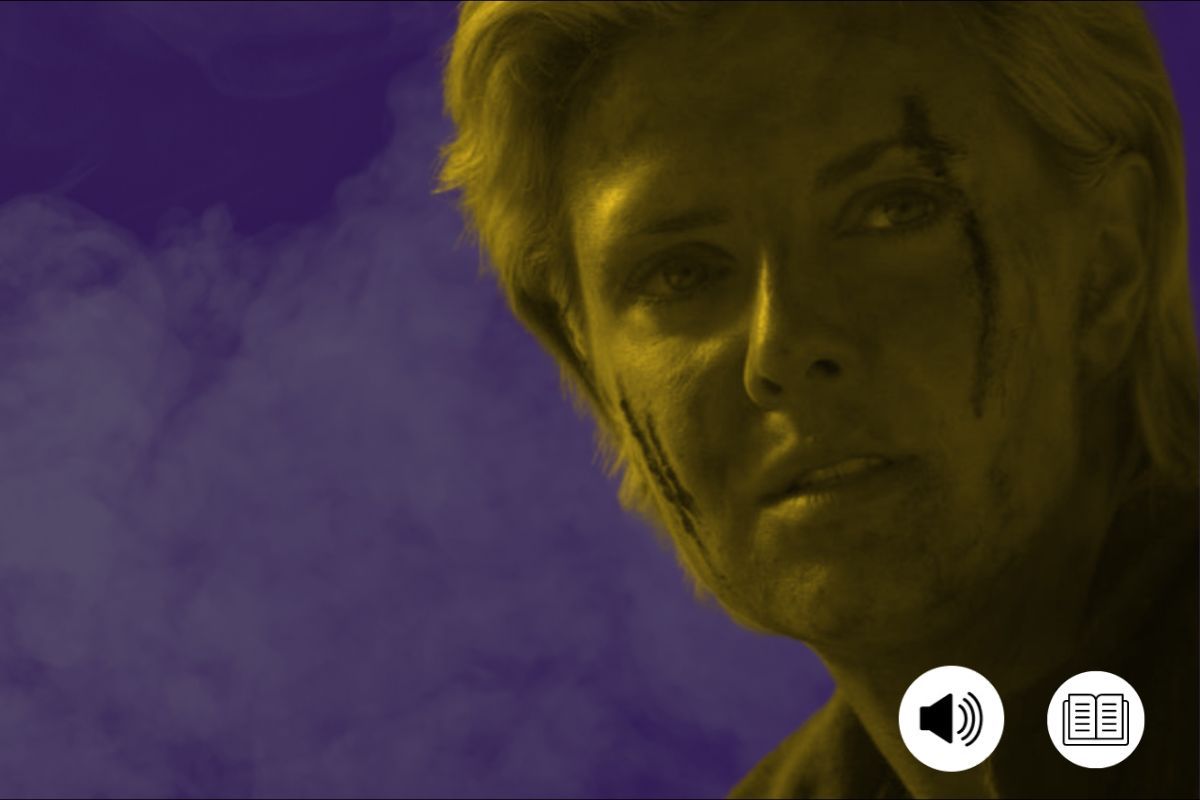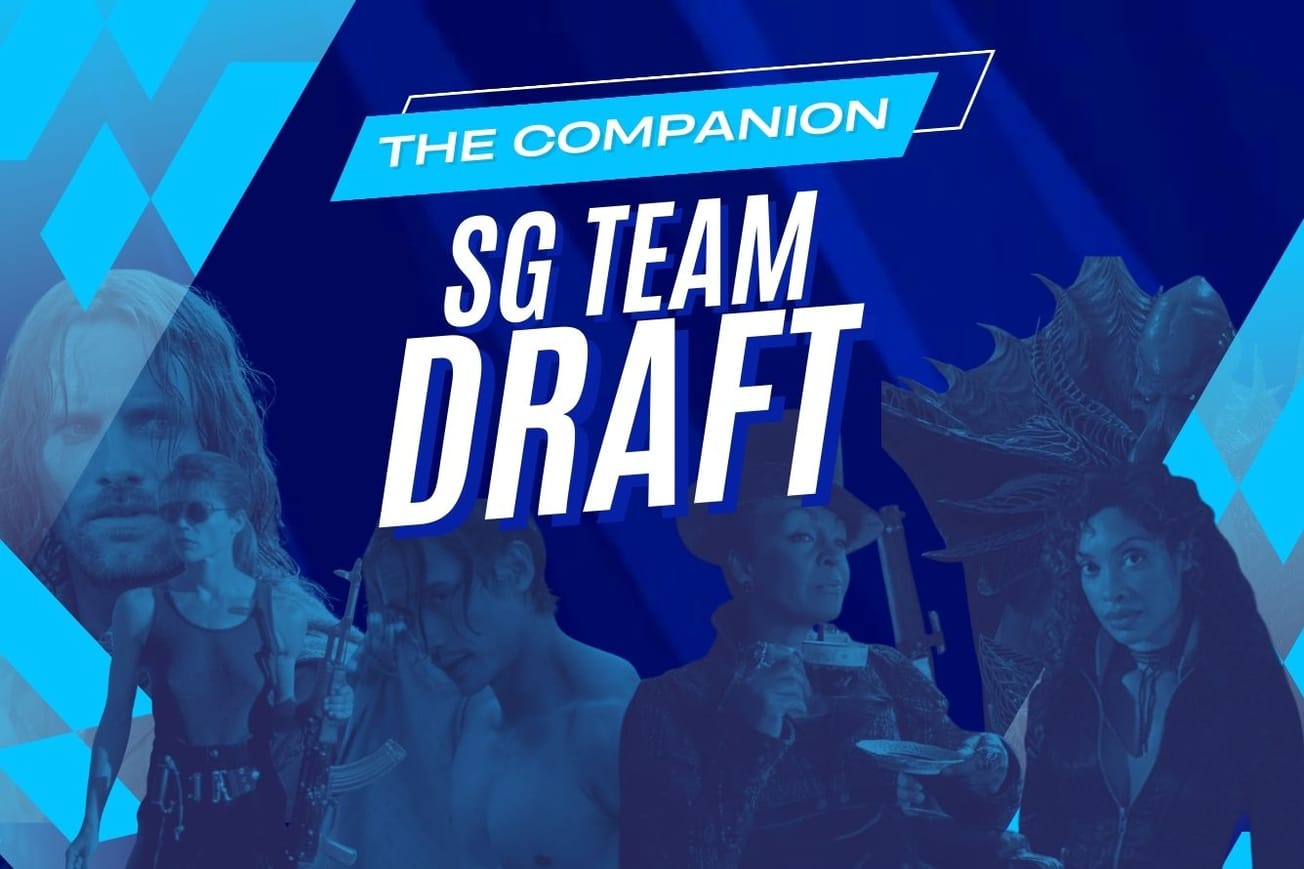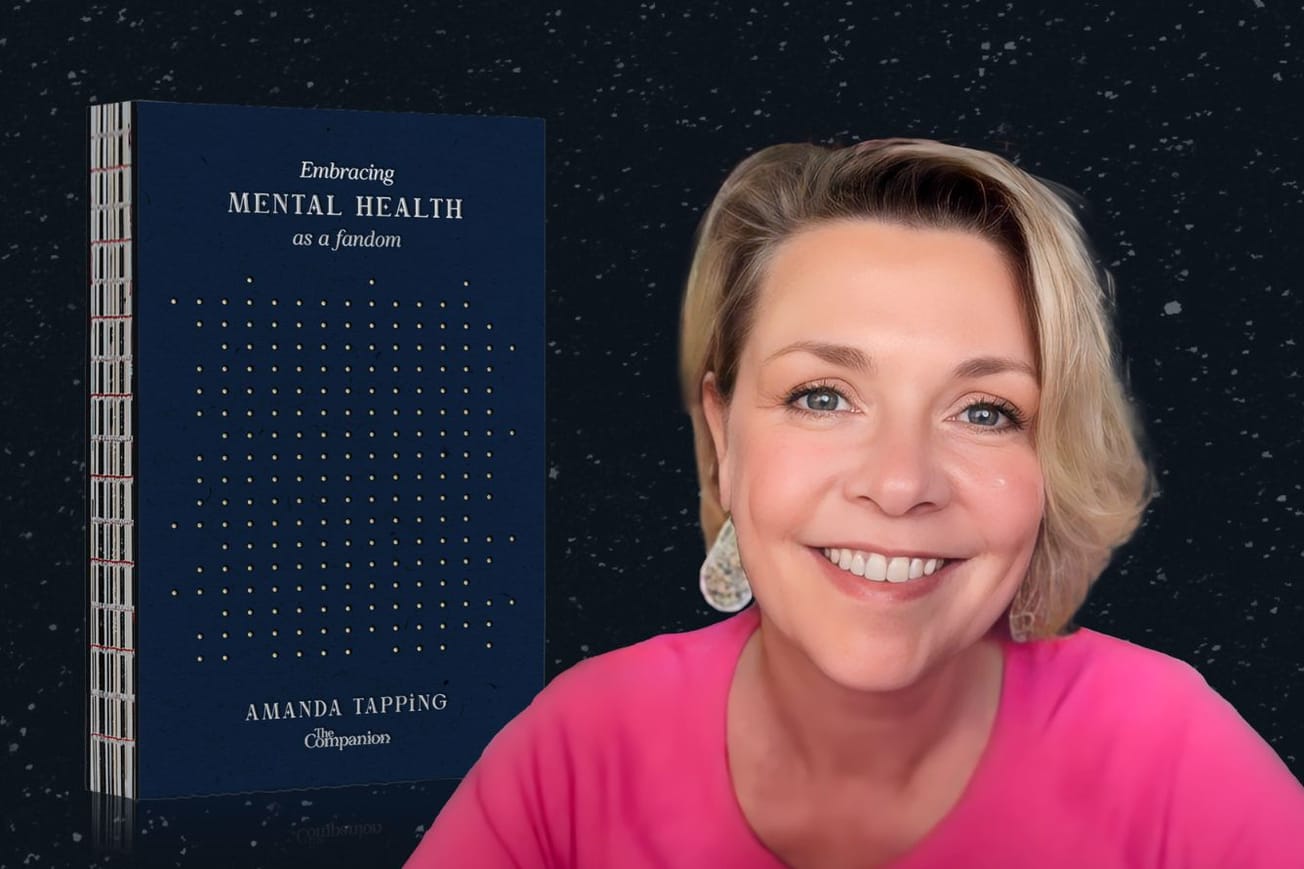The Stargate SG-1 episode ‘Grace’ (S7, Ep13) showed us the insight and inventiveness of Samantha Carter as she fends off unanswered questions from deep within her subconscious, all whilst trying to jump-start the drifting Prometheus. When we think of Sam at her finest, it’s episodes like ‘Grace’ that immediately offer themselves up as evidence.
So much of Stargate SG-1 celebrates Sam the Engineer and Sam the Listener – and later, Sam the Leader. It’s in that space that she truly soars, carrying the emotional burdens of others whilst hot-wiring the latest Goa’uld gizmo to fall through the big round puddle.
Three episodes later, Sam was put through the wringer again. She was pushed to her physical and mental limits, but the Sam that ‘Death Knell’ (S7, Ep16) showed us was like nothing we had seen before. In short, it broke all of the ‘rules’ that as viewers of Stargate SG-1 we had come to expect and in doing so exposed the core of a character we thought we knew.
Jack and Jacob: Saying Nothing Says Everything
‘Death Knell’ begins with Sam and Jacob Carter (Amanda Tapping and the sorely missed Carmen Argenziano) comparing notes in a prefab workshop at the second Alpha Site, the frontline between the tottering Tau’ri/Tok’ra/Free Jaffa entente and the Goa’uld forces of Anubis. The discussion is around the development of a new energy weapon capable of stopping the genetically engineered Kull warriors. Referred to as ‘drones’ by SGC (unhelpful in an episode also featuring a UAV, or drone), these black-clad Goa’uld super-soldiers have proven capable of shrugging off all conventional weapons.
They share a bittersweet moment showing both how far their relationship has come since Jacob was first seen on-screen in the emotionally bruising Stargate SG-1 episode ‘Secrets’ (S2, Ep9), yet how much work is left to be done, before the hounds of Anubis attack. Then credits.

For an episode that revolves around the plight of Sam, she’s seldom on-screen, and much of the time she is on-screen is spent wordlessly. Yet, her presence is felt in almost every second. The practical reality is that Amanda Tapping was filming ‘Death Knell’ back-to-back with ‘Grace’ and another episode, so her appearances were necessarily limited and light on dialogue, but necessity is the mother of invention. Her silence becomes the axis around which the emotional weight of the episode is lifted. One can easily imagine the sheer exhaustion of everyone’s workload – Stargate Atlantis had entered production as well – informing the war-weariness of the characters.
Once the credits lift we are plunged directly into the aftermath. Back in SGC, Alpha Site’s destruction is breathlessly reported, and Sam and Jacob are counted among the missing. Naturally, Col. Jack O’Neill (Richard Dean Anderson) leads the rescue, but on the subject of Sam, he’s as silent as the absent Maj. Carter herself. Twice her fate is touched on by other characters, receiving no response from the man who refuses to give his fears the oxygen of acknowledgment. Twice Teal’c (Christopher Judge) suggests that tracks through the undergrowth might be hers and Jack responds with only a flat “Yeah.” Sam’s shadow lingers over every scene, but it is in Jack’s wordless desperation that this grim shade is truly inescapable.
Only when Jacob is discovered pinned beneath a fallen tree in the blasted ruin of Alpha Site does Jack acknowledge Sam openly, their feelings towards her, both intensely complicated, and similar taciturn martial temperments creating a shared understanding. It’s enough to allow these two most emotionally restrained characters a moment to acknowledge their fears:
Jacob: Anubis’ drones…
Jack: We know.
Jacob: Take this. It’s not a hundred percent, but it’s all we’ve got. It only has a few more shots. Sam has a fully charged power unit.
Jack: Where is she?
Jacob: I don’t know. I don’t even know if she’s still alive.
(As an aside: If Jacob had the prototype weapon and Sam had the enhanced power cell, and Sam and Jacob were together during the attack, why did they not combine the two items earlier to see off the Kull warrior?)

This rare moment of emotional honesty is underscored later in the episode when Hammond – Sam’s surrogate father and Jacob’s oldest friend – attempts to reassure him, and the roles are flipped. Like Jack before him, Jacob doesn’t respond. Instead, he greets it with silence, a set jaw, and a change of subject to the secondary plot about a Tok’ra spy and the growing distrust between the shotgun wedding of haughty Tok’ra and hot-tempered Free Jaffa.
Jacob: Any news on Sam?
Hammond: Not yet, but we have a UAV airborne and all available SG teams are searching. I don’t know anyone tougher or more resourceful. She’ll find a way out of this.
Jacob: How’s the investigation going?
By now the fear that we might not be seeing Sam again has trickled down to the audience too. If she’s alive, she is being hunted through the alien wilderness by a Kull warrior, an implacable foe with the work ethic of the Terminator and the aesthetic of the Predator.
Sam on the Run: Storytelling in a Look
Halfway into the episode, Sam reappears (not including the flashback to the attack itself as Jacob explains what happened). Streaked with grime and the bloody trail from a classic action hero temple/forehead wound, she affixes a tourniquet to her thigh to staunch the flow from a nasty-looking gash in her left leg.
At the crunch of twigs, she presses herself against the mud and tangle of an earthen bank as the Kull passes by. We hold our breath with her as it turns back, its unseen gaze resting on her hiding place – looking across but not down. The whole ballet cribbing so heavily from The Fellowship of the Ring – the scene in which the hobbits cower by the roadside from the Dark Riders – that it would in other hands be almost comedic, but here it only serves to emphasize Sam’s vulnerability.

This is a Sam Carter we rarely see. With no toys to tinker with and no team to inspire, what remains? Is this wounded and weary woman in battered battledress more than the sum of her parts?
Tracked relentlessly for the power cell she guards, we bear witness to her sheer resilience and determination. We all have a different experiences of pain and exhaustion, but few of us – thankfully – are required to endure it on this scale or with these stakes. Exhaustion dramatically reduces concentration and focus, making complex reasoning all but impossible. It’s all we can do to put one foot in front of the other, but that’s a luxury she cannot afford.
The threat of danger might well trigger the fight-or-flight response – the rush of adrenaline and cortisol that accompanies fear or stress. It’s a hormonal hit that Sam needs to push through her agony, but the Kull warrior isn’t something she can outrun on her tattered leg, nor something she can fight. Stress responses make judgment and reasoning difficult by design, they want less introspection and more action.
Sam isn’t just pushing herself to keep going – and to remain conscious – but to keep thinking.
We’re often shown glimpses of Jack’s special forces training, but this is our first sustained encounter with Sam’s own fieldcraft, hinting at her USAF career beyond that shown in the series. Although previously told she served as a combat pilot over the disintegrating Yugoslavia, it’s not something we see her demonstrate on screen but here it overshoots the cockpit and lands behind enemy lines with SERE – Survival, Evasion, Resistance, and Escape. A part of the airman’s arsenal since the Second World War, SERE – or survival – training focuses not just on dodging patrols or starting campfires, but on mental preparedness, particularly situational awareness (SA).
2017’s Air Force Handbook 10-644: Survival Evasion Resistance Escape (SERE) Operations breaks the process of situational awareness into four actions designed to keep the airman’s thinking clear and reasoning firmly grounded in fact: Observe/Perceive, Analyze/Interpret, Decide, and then Execute and Modify. Given how closely the Air Force worked with the production, it’s fair to say that what we see on screen is rooted in authenticity. Not so much turning the remains of the SGC’s UAV (Unmanned Aerial Vehicle) into a rocket launcher that somehow relies on the Kull warrior walking across her precise line of sight, but the improvised camouflage and the attempt to signal the UAV with her watch – it’s SERE in action.
Action Sam
Ultimately the ill-fated UAV saves Sam’s life. Bringing it down alerts Jack and Teal’c to where the Kull is, and in turn where Sam is likely to be lurking, but it’s her improvised rocket launcher that buys her rescuers time. It’s a nod to the Sam Carter we thought we knew – the one who ingeniously solders and screwdrivers her way out of a conundrum as a good science fiction hero should – but the revelation was the Sam we didn’t know, or at least didn’t appreciate.

Sam Carter is an inspiration because her achievements are achievable and the skills she deployed in ‘Death Knell’ have their precedent. In 1995, US airman Captain Scott O’Grady was shot down over the former Yugoslav Republic of Bosnia and Herzegovina – two years before Stargate SG-1 debuted and during the conflict that Sam served – and survived in the wilderness for six days courtesy of his SERE training, foraging for food, evading enemy search parties, and ultimately signaling for help. Earlier still, in 1991, Lt. Devon Jones and Lt. Larry Slader were shot down over Iraq during Operation Desert Storm. Jones dug himself a concealed fox-hole where he remained out of sight until rescue, whilst Slade lost his bearings and became an Iraqi POW. Both men reference their SERE training in how they reacted to finding themselves behind enemy lines.
Strip away the astrophysics, the Stargates, the Ba’al punching, and the sun exploding, and this is what remains. Maj. Sam Carter isn’t exceptional in the way we think she is, or rather that she is exceptional as a standard, a product of a factory that manufactures the exceptional. As of 2020, the USAF has 806 female pilots and 347 female navigators. Most of these women would have received SERE training and were they to find themselves in the blackened crater of Alpha Site, their actions would be very much the same
This tense, minimalist depiction of Sam might be the result of pure pragmatism as the pressure began to build in the Stargate SG-1 production office, but it also has the effect of laying bare the real-world foundation of Sam Carter. It validates everyone who has celebrated the character as a role model, everyone who has sought to hold themselves to her standards or follow the path she laid down.

Once the Kull warrior has been defeated, Sam’s will to fight evaporates. Without the threat, the training and determination that has driven through the woods for days on the end are finally switched off. She allows herself the luxury – the necessity – of mental and physical surrender. Air Force Handbook 10-644: Survival Evasion Resistance Escape (SERE) Operations offers no guidance on the mental state of a downed pilot during or immediately following recovery. Perhaps this is the implicit permission Sam needs that her work is done and the long-delayed shock comes rushing in.
And in the end, Jack’s understanding is almost as wordless as his fear as she slumps down on a rock and he brings her in. Nobody can know what it is to go through what she’s gone through unless you’ve been there yourself. It’s a bond nobody can break or replicate, it’s tempting to view it through the giddy glee of ‘shipping, but this moment of rare physical affection between the two is deeper and more nuanced than that. It’s a comradeship honed through experience, battle, trauma, and love.
Sam: I just need to rest for a minute.
Jack: Come here.
This article was first published on May 25th, 2021, on the original Companion website.
The cost of your membership has allowed us to mentor new writers and allowed us to reflect the diversity of voices within fandom. None of this is possible without you. Thank you. 🙂










